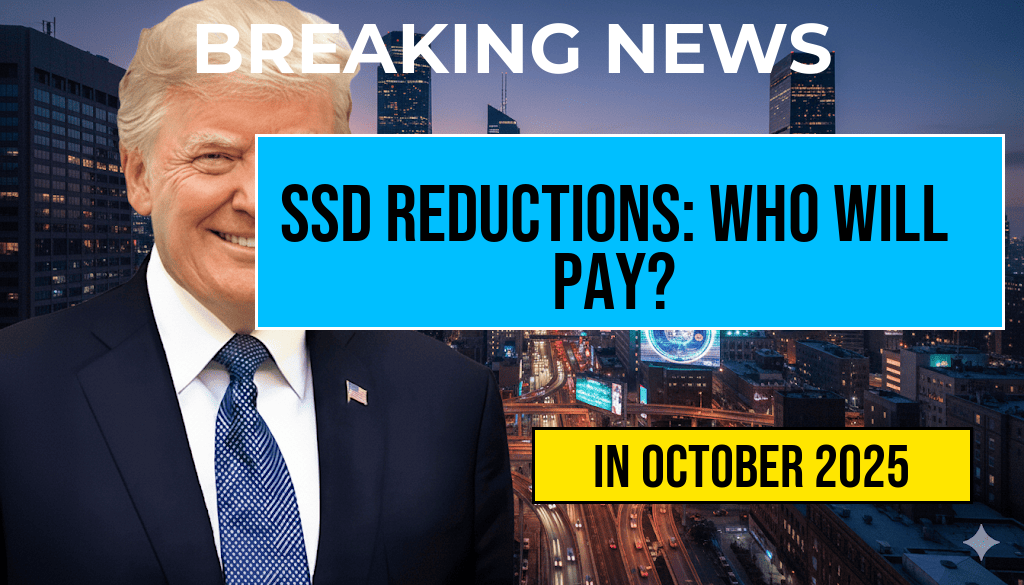Over the past decade, proposed and enacted reductions in Social Security Disability Insurance (SSDI) benefits have totaled approximately $82 billion. These cuts, driven by policy debates around fiscal responsibility and program sustainability, raise critical questions about who will bear the economic burden of these adjustments. As policymakers navigate the complex landscape of federal entitlements, beneficiaries, taxpayers, and the broader economy face varying levels of impact. The shifts in SSDI funding reflect ongoing tensions between ensuring the program’s long-term viability and safeguarding the financial stability of individuals relying on disability benefits. This article explores the scope of these reductions, the stakeholders involved, and the potential ripple effects on the social safety net and national budget.
The Scope of SSDI Reductions Over the Past Decade
Between 2013 and 2023, policy reforms and budgetary constraints have resulted in significant modifications to SSDI allocations. According to data from the Social Security Administration, the cumulative effect of these changes amounts to roughly $82 billion in reduced benefit payments over ten years. These reductions stem from various policy tools, including tightened eligibility criteria, adjustments to benefit calculations, and administrative cost controls.
Key Policy Changes Contributing to Reductions
- Benefit Formula Adjustments: Modifications to how disability benefits are calculated have led to lower monthly payments for some recipients.
- Work Incentive Restrictions: Stricter rules on returning to work and earnings limits have limited beneficiaries’ ability to supplement income without losing benefits.
- Administrative Cost Cuts: Efforts to streamline program operations have resulted in reduced staffing and service delivery, impacting the efficiency of claims processing.
- Eligibility Tightening: More rigorous scrutiny of medical evidence and earlier denial of claims have decreased new benefit approvals, reducing future payouts.
Who Will Bear the Cost?
Beneficiaries Facing Reduced Support
Individuals relying on SSDI form a vulnerable demographic, often with limited alternative income sources. With benefit adjustments, many face increased financial hardship, particularly those with marginal incomes or high healthcare costs. Advocacy groups warn that prolonged benefit reductions could push some beneficiaries into poverty or exacerbate health disparities.
Taxpayers and Federal Budget Implications
From a fiscal perspective, reductions in SSDI spending aim to alleviate pressure on the federal budget and improve long-term sustainability. However, critics argue that these cuts may shift costs elsewhere, such as increased reliance on Medicaid or Supplemental Security Income (SSI), which are funded by taxpayer dollars. The net effect depends on whether savings in SSDI are offset by rising costs in other social programs.
Employers and the Workforce
Changes to SSDI can influence employment patterns among disabled individuals. Stricter eligibility and benefit restrictions may discourage workers from seeking disability benefits, potentially altering labor market dynamics. Conversely, some argue that reduced benefits could incentivize employment among disabled workers, though evidence remains mixed.
Economic and Social Impacts
| Stakeholder | Potential Impact |
|---|---|
| Beneficiaries | Increased financial instability, health risks due to reduced access to care |
| Federal Government | Reduced short-term spending, but possible long-term costs in other social services |
| Taxpayers | Potential savings, but increased burden if beneficiaries turn to other safety nets |
| Employers | Possible shifts in hiring practices for disabled workers |
Policy Debates and Future Outlook
The debate over SSDI reductions underscores broader conflicts over social welfare policy. Some policymakers emphasize fiscal prudence, citing concerns about program solvency amid demographic shifts like aging populations and lower birth rates. Others highlight the moral and economic imperative to protect vulnerable populations from hardship. Moving forward, legislative proposals continue to oscillate between further tightening and increased investment to bolster benefits, often influenced by the prevailing political climate.
Experts suggest that sustainable reform will require a balanced approach, integrating improved administrative efficiency with targeted support for those most at risk. Additionally, expanding employment opportunities for disabled workers through workplace accommodations and training programs could mitigate some adverse effects of benefit reductions.
As the nation grapples with these complex choices, the ultimate question remains: who bears the true cost of SSDI reductions, and how will it shape the social fabric in years to come? Stakeholders across the spectrum are closely monitoring developments, aware that policy shifts in this arena resonate beyond individual lives, touching on the core values of social safety and economic security.
Frequently Asked Questions
What is the main reason behind the SSD reductions over the past decade?
The SSD reductions are primarily due to policy changes, budget constraints, and efforts to improve the program’s financial sustainability.
How much money has been cut from the SSD program over the last ten years?
Approximately eighty-two billion dollars has been reduced from SSD benefits over the past decade.
Who will bear the costs of these reductions?
The costs are likely to be borne by beneficiaries, claimants, and potentially taxpayers if the program’s sustainability is compromised.
What are potential impacts of the SSD reductions on beneficiaries?
Potential impacts include decreased benefit amounts, increased financial hardship, and challenges in maintaining livelihoods for disabled individuals.
Are there any proposed solutions or policy changes to address the SSD reductions?
Proposed solutions include reforming the benefit structure, increasing funding, or implementing policy adjustments to ensure program sustainability.








